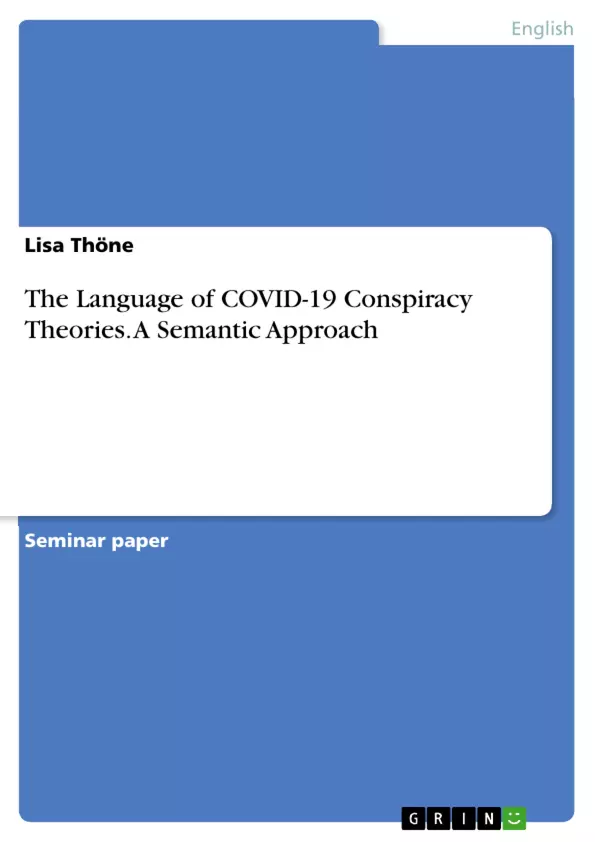This paper examines the language of COVID-19 conspiracy theories through analysing different sense relations, framings, and word combinations/blendings. The paper unveils linguistic tactics used to spread misinformation and provides crucial insights for combating misinformation and promoting critical thinking.
To dissolve and understand the language of conspiracy, it is useful to first look at single units of language that mean something – words, and their semantic relations within the English language and to the world (OALD). Existing research recognises that conspiracy language is distinct and coins new linguistic structures with new senses which can then insert influence on the recipients which does not serve their cognitive well-being. An example of this would be the extensive use of the word truth in conspiracy theories, attached to a narrow belief in the sense of ‘the only belief that should be accepted, otherwise, a person will suffer’. If someone is mentally labile and believes that truth only refers to that certain narrow belief, the person is likely to be manipulated.
Inhaltsverzeichnis (Table of Contents)
- Introduction
- Background/Theory Chapter
- Defining COVID-19 and Conspiracy
- Previous Research
- Working Hypothesis
- Analysis
- Data and Methodology
- Results
- Conclusion
Zielsetzung und Themenschwerpunkte (Objectives and Key Themes)
This paper investigates the language of COVID-19 conspiracy theories through a semantic approach. It aims to analyze the semantic structures used within these theories, exploring the meanings attached to specific words, the creation of new terminology, and the role of framing in spreading misinformation. The paper seeks to understand how conspiracy language differs from non-conspiracy language and its impact on cognitive well-being.
- The definition and characteristics of COVID-19 conspiracy theories.
- The role of language in shaping and spreading conspiracy theories.
- The semantic analysis of COVID-19 conspiracy language, including the use of specific words, the coining of new terminology, and the impact of framing.
- The potential consequences of COVID-19 conspiracy theories, including their impact on public health and trust in scientific information.
- The need for effective communication strategies to counter misinformation and promote public understanding of scientific facts.
Zusammenfassung der Kapitel (Chapter Summaries)
- Introduction: This chapter introduces the topic of COVID-19 conspiracy theories and highlights the importance of understanding their language. It establishes the paper's central question: how does the language of conspiracy theories differ from non-conspiracy language, and what are the implications of these differences?
- Background/Theory Chapter: This chapter provides a theoretical framework for the analysis. It defines the terms COVID-19 and conspiracy, drawing on existing research and highlighting the prevalence of misinformation about the pandemic. It discusses the role of framing in shaping public perception and the need to address concerns and build trust.
Schlüsselwörter (Keywords)
This paper explores the key concepts of COVID-19, conspiracy theories, semantics, framing, misinformation, and public health. It investigates the linguistic structures and specific word choices used in COVID-19 conspiracy theories, examining the influence of these elements on the spread of misinformation and the potential impact on public trust in science.
- Quote paper
- Lisa Thöne (Author), 2021, The Language of COVID-19 Conspiracy Theories. A Semantic Approach, Munich, GRIN Verlag, https://www.hausarbeiten.de/document/1474664


